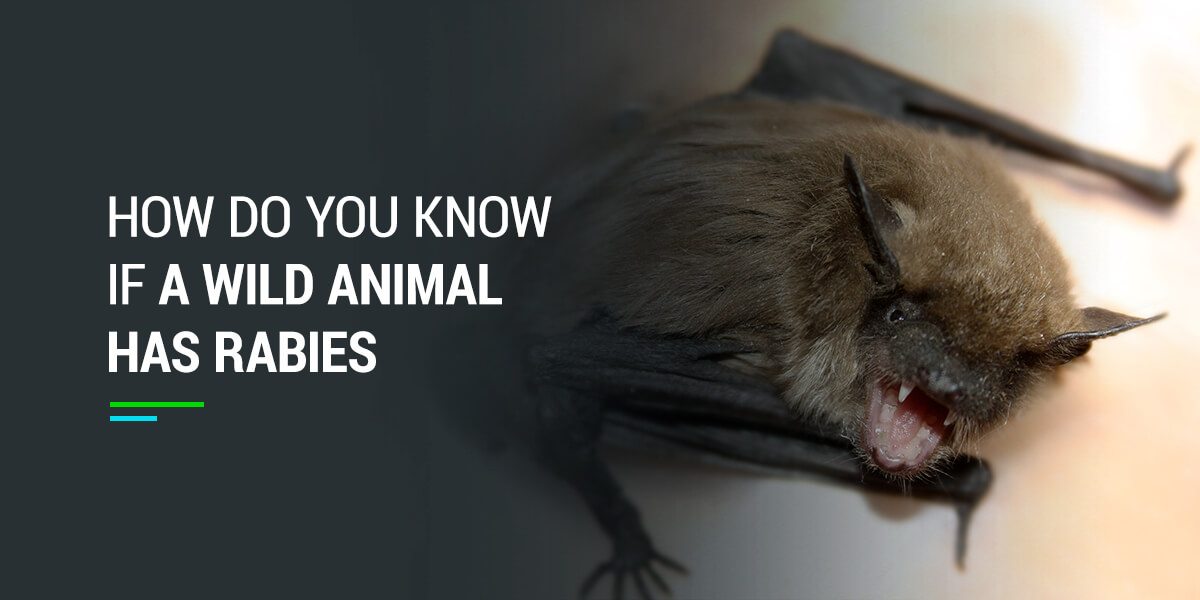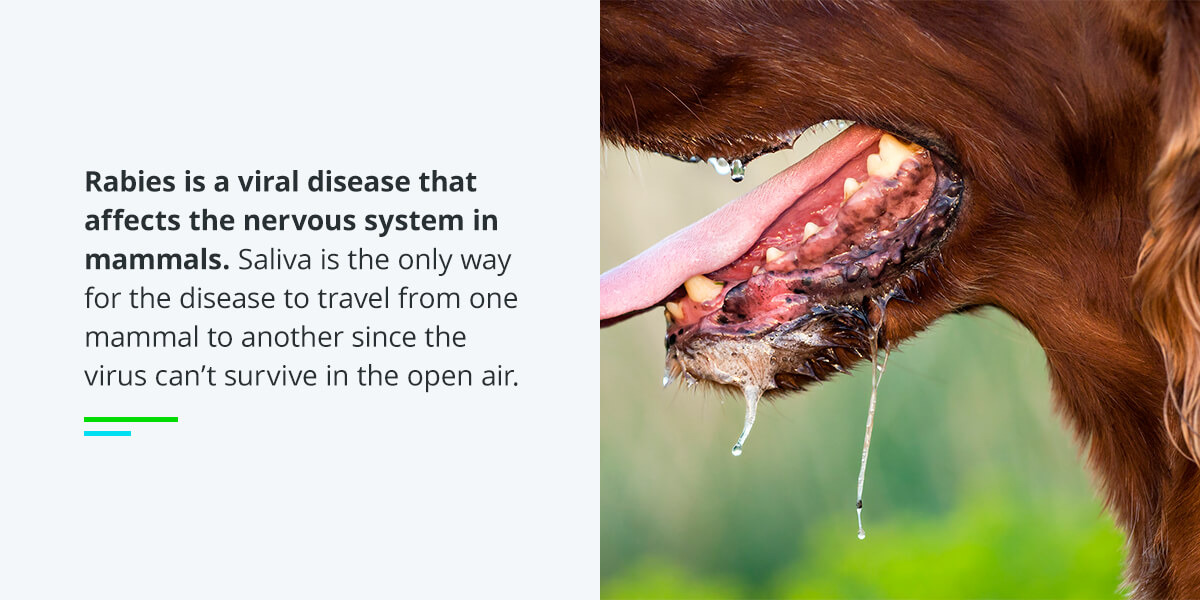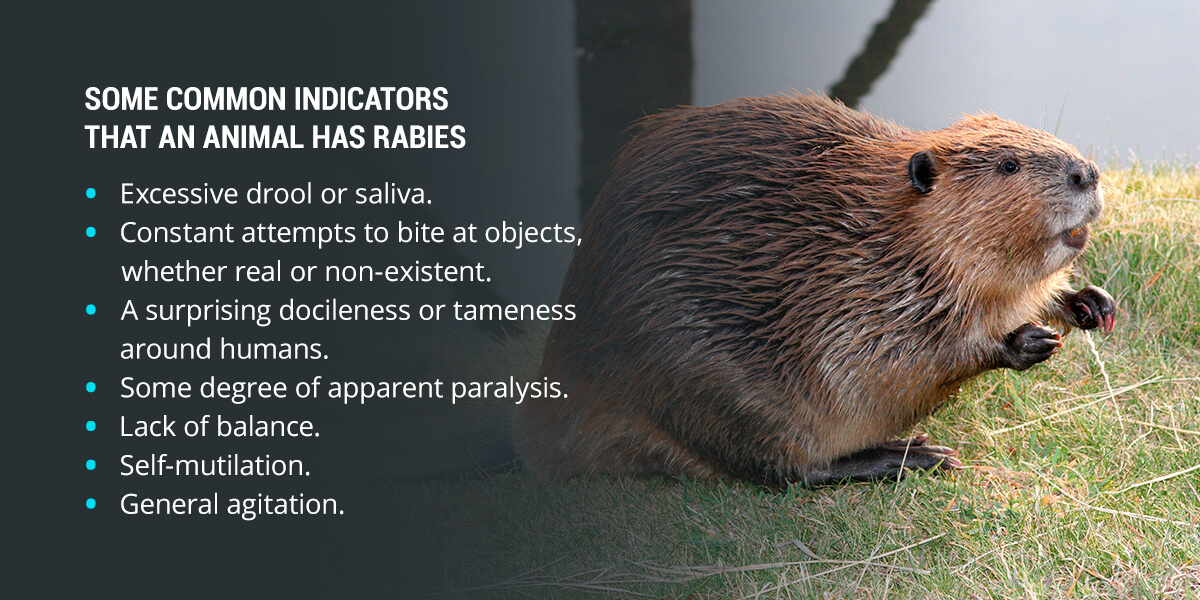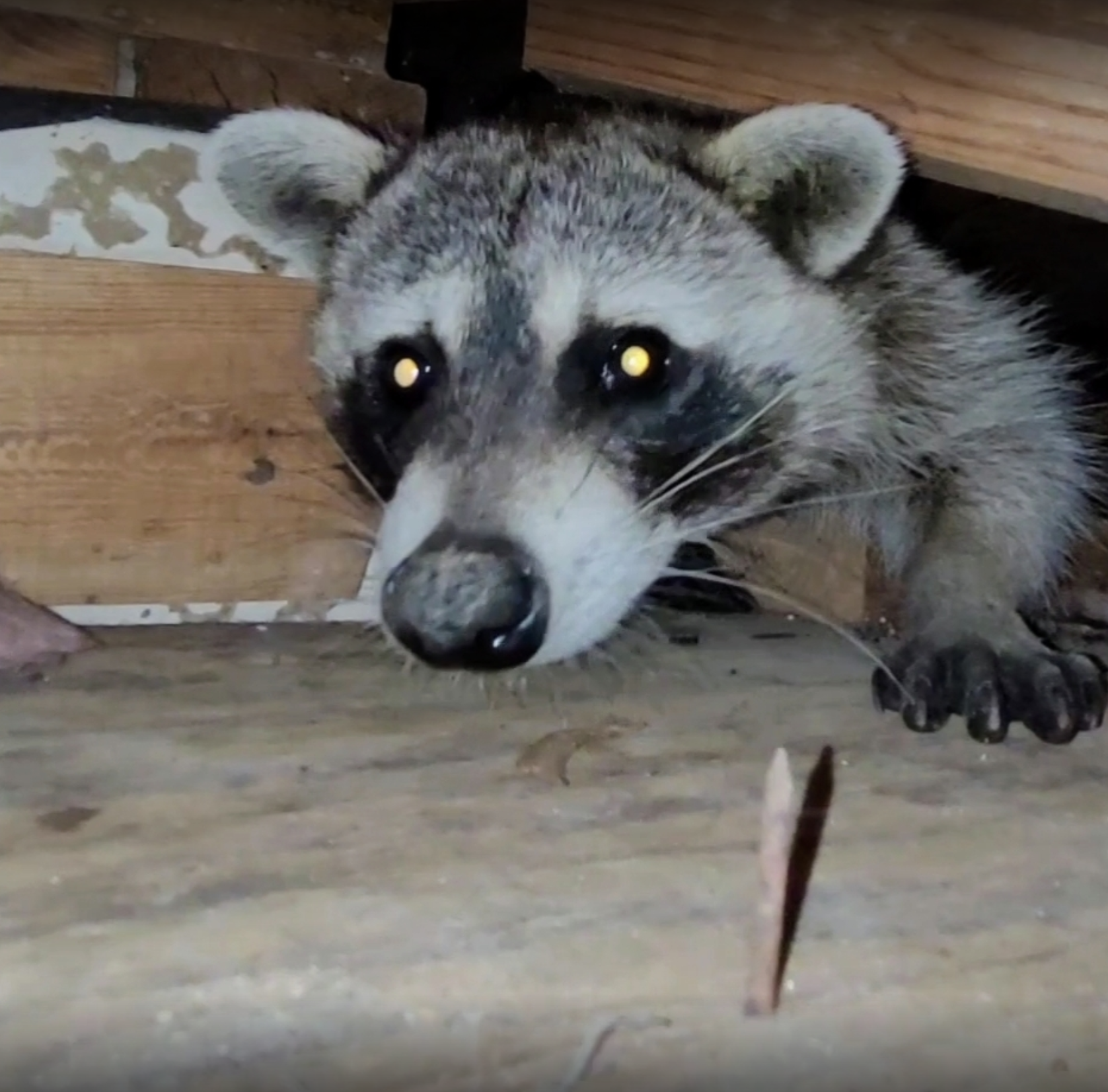
Rabies is a serious disease that, if left untreated, can prove fatal for any mammal that has it. To help prevent you and your loved ones from contracting this fatal disease, you should be able to tell when a wild animal has rabies.
What Is Rabies and How Can It Affect Animals (And You, if Bitten)?
Knowing what rabies is and how wild animals get this disease is the first step to countering it. Rabies is a viral disease that affects the nervous system in mammals. It is most often transmitted by animals a few days before they die when their saliva comes into contact with another mammals’ scratches, open wounds or mucous membranes. Normally this is the final stage of rabies.
Saliva is the only way for the disease to travel from one mammal to another since the virus can’t survive in the open air.
When a human contracts rabies, they first experience an incubation period that can range from a couple of weeks to even a year. When this period ends, the person will begin to experience flu-like symptoms for several days. Eventually, they may feel discomfort and irritation where they were bitten or scratched, which will eventually evolve into either furious rabies or paralytic rabies.
Furious rabies normally involves irrational and hyperactive behavior. Hallucinations, delusions and even a fear of water may also start to occur as the disease reaches its acute stage. On the other hand, paralytic rabies causes the infected person to become slowly paralyzed and fall into a coma. In both kinds of rabies, the person will eventually die without treatment.
Fortunately, rabies in humans is pretty infrequent with only 1 to 3 cases reported each year, and this condition can be fixed if treated early enough. If you find that you’ve been bitten or scratched, or you came into any sort of contact with a wild animal, we recommend checking in with a medical professional to check to see if you contracted rabies. And if possible, get professionals to catch the animal so it can also get tested for rabies.
What Are the Most Common Animals to Have Rabies?
Rabies only affects mammals. So animals like snakes, birds and fish cannot give you rabies if they scratch, bite or otherwise come into contact with you. Most cases of rabies in the United States occur in wildlife and are most commonly carried by:
- Bats
- Woodchucks
- Cats
- Raccoons
- Cows
- Dogs
- Ferrets
- Goats
- Coyotes
- Horses
- Monkeys
- Rabbits
- Foxes
- Beavers
- Skunks
When Americans are outside of the United States, they contract rabies most frequently from dogs. However, in the U.S., canine rabies is exceptionally rare with only about 1% of cases being attributed to dogs in the country. Additionally, almost all cases of domesticated animals contracting rabies occur when the animals do not have their rabies vaccination.
It’s important to note that even if the mammal is not mentioned as a popular carrier for rabies, it may still have this disease. All mammals are susceptible and there are certain major signs that may indicate whether or not an animal has rabies.
How Can You Tell if an Animal Has Rabies?
Generally, you can’t positively tell if a wild animal is rabid just from looking at it. The only way to confirm with certainty that an animal is rabid is by conducting lab tests. However, there are some common indicators that an animal has rabies. Some of these include:
- Excessive drool or saliva.
- Constant attempts to bite at objects, whether real or non-existent.
- A surprising docileness or tameness around humans.
- Some degree of apparent paralysis.
- Lack of balance.
- Self-mutilation.
- General agitation.
- You see the animal at an odd time of the day. For example, a nocturnal animal walking around during the daytime.
If a wild animal comes into contact with you, it would be beneficial to get yourself checked by a medical professional for rabies even if the mammal doesn’t possess any of these symptoms. It’s better to get checked and be negative compared to not getting checked and turning out positive.
How Can You Prevent Rabies (In Your Pets and in People)?
While measuring how common rabies is in wild animals is difficult, it is better to be safe than sorry. To prevent you and your loved ones from getting rabies, you should make sure that your mammal pets are up to date with their rabies vaccinations and keep them away from wild animals. It also helps to spay or neuter your pets so there isn’t an unmanageable amount of animals to keep track of.
If you have to get in contact with a pet that was in a fight with a wild animal, protect yourself by wearing gloves so you don’t accidentally get the wild animal’s fresh saliva inside of a cut or scratch.
You should also try to stay away from wild animals, even if they don’t appear to have any of the symptoms of rabies or if they are babies. Animals may have rabies without explicitly exhibiting common symptoms, so it’s best to stay away from them. And wild animal babies are just as susceptible as any other mammal to contracting rabies.
If you notice an injured wild animal and you wish to assist it, we recommend contacting local authorities for help. These men and women have the proper equipment and training necessary to provide assistance for the injured animal in a way that doesn’t put anyone in danger. Also, if you notice some stray animals in your area that are acting strangely, it’s a good idea to contact animal control to remove them.
And as we stated before, if you came into physical contact with a wild animal, it may be worth getting tested for rabies. A bat scratch can be extremely unnoticeable but can still transfer this disease.
What to Do if You Suspect an Animal Has Rabies
Animals with rabies should never be trifled with. Rabies makes animals dangerous to themselves and others. If you suspect a wild animal near you has rabies, we recommend either calling your local animal control or getting in contact with Urban Jungle Wildlife Removal LLC.
Our team is made up of qualified and fully insured professionals who possess bachelor’s degrees or higher in biology or related fields. We will investigate and remove the wild animal from the premises so you and your loved ones can remain safe without any damage to your property. If you have any issues with wild animals, feel free to contact us to see how we can help.





